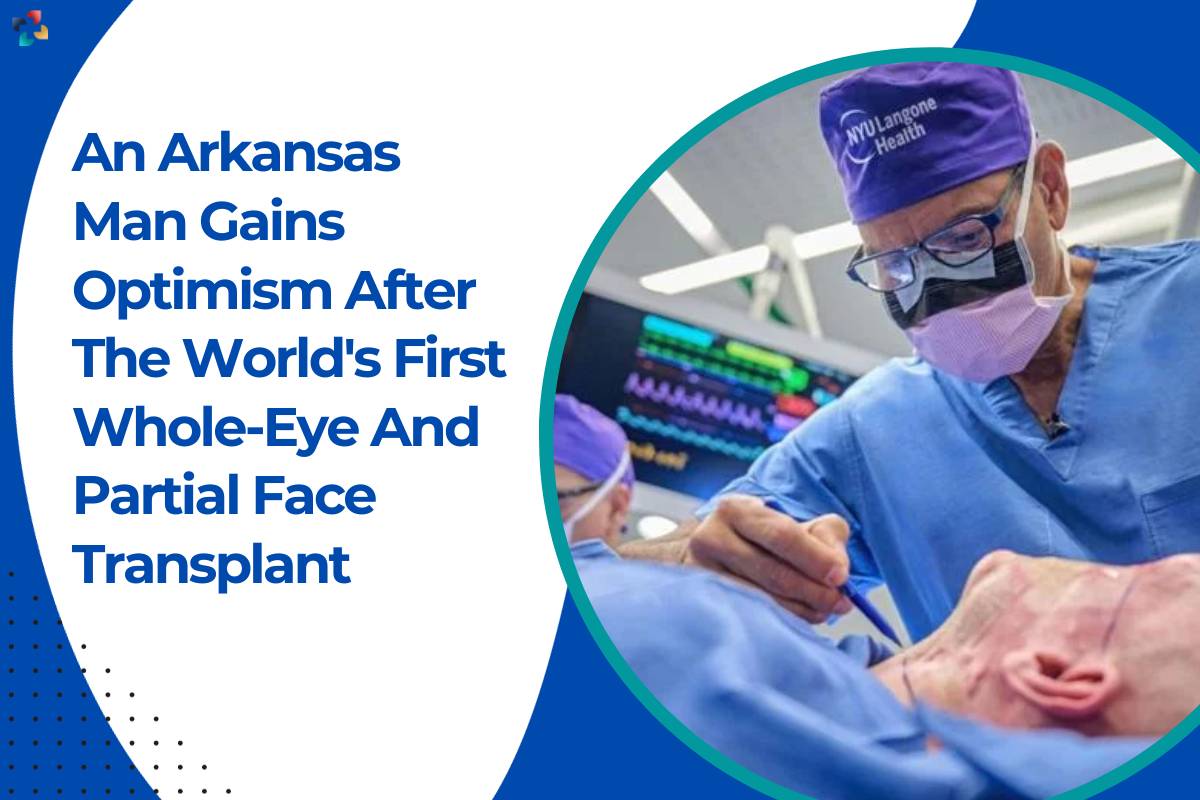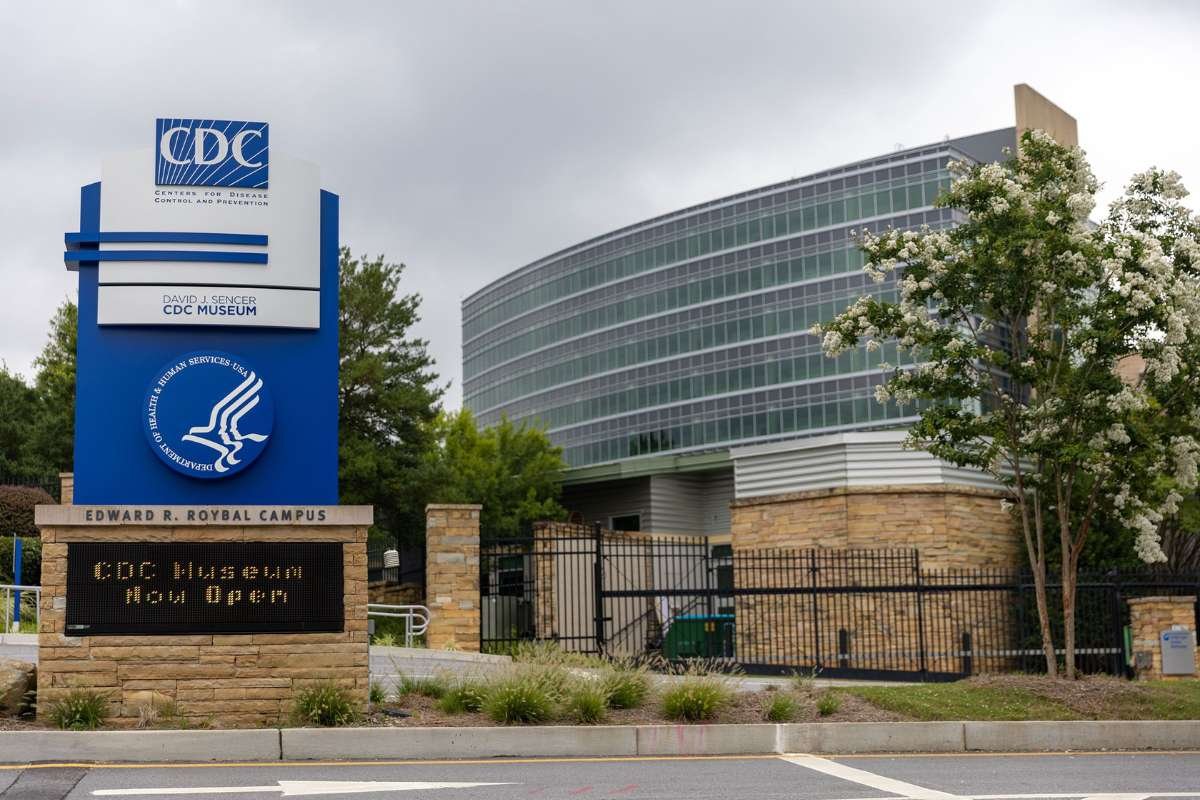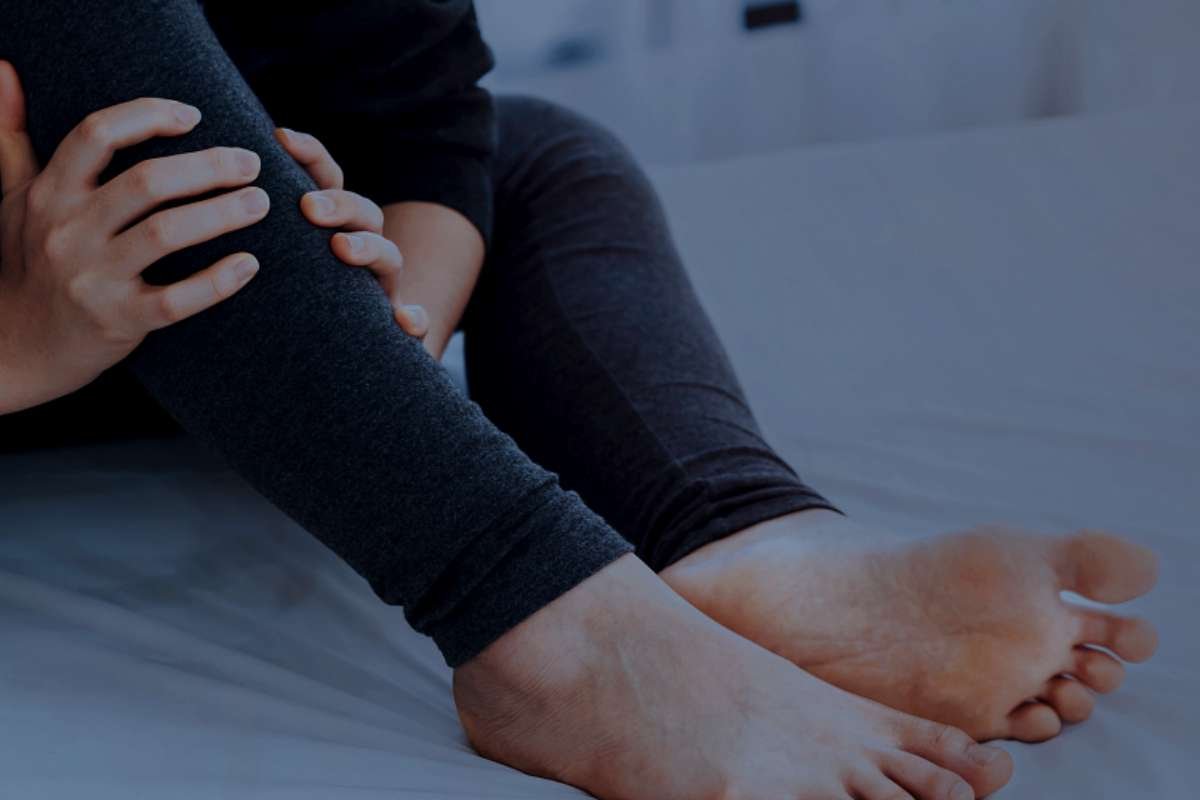Meagan James had never expected to see that moment.
Her husband Aaron James was the recipient of the first successful whole-eye transplant in history, carried out by a medical team at NYU Langone Health in New York.
Aaron received a partial face transplant and a new window into his soul following a work-related accident that resulted in the loss of his left eye and a portion of his face.
Meagan first noticed the puffiness following surgery and the brown colour of her husband’s new eye when she looked into it. Aaron’s eyes are a natural ocean blue colour.
She also saw his new cheek, lips, and nose, where a little stubble of beard had already begun to sprout. The emotion started when she noticed a grateful expression on someone’s face.
She was pleased for her twenty-year hubby.
Meagan described the experience as “crazy, great, weird, strange, ecstatic, happy feeling.” “I was just relieved he survived, and everything seemed to be going well at the time.”
Aaron’s transplant operation was conducted on that day in late May by a team of over 140 surgeons from NYU Langone Health. The process took roughly 21 hours to complete. During the procedure, a single donor’s whole left eye as well as several facial tissues were transplanted. It was a first in medicine.
Aaron’s medical team reports that there are now “remarkable” signs of health in his eye. Despite not being able to see out of his eye, he is optimistic that vision will eventually return and that his groundbreaking operation will progress the field of transplant medicine.
Aaron remarked, “That’s really my biggest hope.” “It’s excellent if I can see through it. However, I’m all for it if it helps pave the way for the next step in the medical industry.
A transformative incident
Meagan remarked that seeing Aaron with his new eye and face “wasn’t as big of a shock” as seeing him the night of his accident.
As a high-voltage power lineman, Aaron, a 46-year-old veteran of the military stationed in Arkansas, was working with colleagues in Mississippi that June 2021 when he unintentionally touched a live wire with his face.
Aaron suffered severe facial injuries from the lethal 7,200-volt electric shock, including injuries to his left eye, lips, cheek, chin, and arm.
Meagan’s phone rang while she and their high school daughter, Allie, were heading home from the grocery store back in Arkansas. Even though she didn’t recognise the number, she answered. She became aware of the accident.
As soon as Meagan returned home, she packed her bags and drove the four and a half hours to Mississippi, where Aaron was receiving medical attention at a nearby hospital. Her phone rang once more as she was driving. This individual was a physician. Aaron’s condition was explained by the doctor, who also revealed that he had been electrocuted.
Is he alright? Will he make it through? Meagan enquired. “The only thing that I can promise you is that he won’t die before you get here,” she remembers the doctor saying in response.
Every morning before work, Meagan would remind Aaron to “be careful.” She still remembers the morning of his accident and questions whether or not she advised him to “be careful” on that particular day.
NYU surgeon, patient show off first whole-eye transplant& partial face transplant
“Oh my god, he has lost his face.”
Meagan stuck by Aaron’s side when he was taken to various hospitals for more advanced treatment, reconstructive procedures, and the amputation of his left arm.
Allie, who was then staying with her grandmother, was able to see him when he was airlifted to a burn unit in Dallas.
Allie remarked, “His chinbone was exposed when I saw him.”
“His eye socket and everything were visible to me. I suppose what made me feel a little uneasy was when I saw his skull. “Oh my goodness, his face is gone,” I thought to myself,” she remarked. “The majority of my concerns were about how he would behave when conscious and awake.”
Aaron claimed he has no memory of the collision.
He explained, “I basically got up, went to work, and woke up in Dallas, Texas, six weeks later.” “Suddenly finding yourself in a hospital is a strange sensation.”
From his Dallas hospital bed, Aaron saw himself for the first time since the accident. Meagan hesitated when he asked her to take a picture.
“Are you sure, she asked? Yes, everything will work out, Aaron replied.
He added, “I was like, ‘Oh, my goodness, this is a bad deal right here,’ and she took a picture and spun the phone around.” Since I felt alright, I knew everything will work out. All we had ahead of us was a lengthy road.
Meagan had been informed by Aaron’s medical staff that she might consider having a face transplant. Aaron said that he was “all for it” when she later brought it up to him.
“The moment the topic of the face transplant was brought up, I realised that this was a huge deal because those procedures aren’t done very often,” he remarked.
Texas experts brought Aaron’s case to the attention of Dr. Eduardo Rodriguez, director of NYU Langone Health’s Face Transplant Programme, and his associates in New York. Dr. Rodriguez had previously completed four face transplants.
Following further information of Aaron’s accident and injuries, Rodriguez declared that Aaron’s survival was “remarkable.”
It’s quite impressive to see Rodriguez walking after he was nearly unconscious in the hospital, with breathing tubes, multiple organ failure, and uncertainty about whether he would have a neurological lesion. Rodriguez added.
He declared, “It’s a testament to modern medicine.” It is evidence of the patient’s and his family’s excellence. Additionally, it’s evidence that, in certain situations, there may have been heavenly intervention even though it wasn’t his time to pass away.
“You must be a patient zero.”
Conversations on the potential for a transplant persisted even after Aaron’s Texas medical team removed his left eye because of excruciating pain. In anticipation of a potential whole-eye transplant, Rodriguez and his colleagues in New York requested that the Texas team save as much of the optic nerve as possible.
Rodriguez cautioned Aaron that the donor eye might not be able to restore vision as they discussed the prospect of performing a whole-eye transplant rather than just a partial face transplant. The transplanted eye and the brain will need to communicate in order for there to be sight.
But even if it doesn’t work, I’ll still have an eye that looks normal, so maybe you can all learn something from this,” Aaron remarked. “You need to have zero patience.”
The prospective recipient list included Aaron in February 2023. Only a few months later, in May, came the chance to conduct the whole-eye transplant and partial facial transplant.
For Rodriguez and his associates, it was a “risky” procedure. No medical team in history had ever successfully transplanted a human eye into a living patient.
“It’s entirely unexplored ground,” Rodriguez remarked.
The procedure was place in two operating rooms. Aaron was in a room with surgeons cutting away the portions of his face that were going to be rebuilt with tissue from donors. Rodriguez was in the adjacent room, removing the eyeball and face of the donor.
According to Rodriguez, “that portion of the procedure took about 12 hours.”
He remarked, “I have to make sure Aaron’s room is prepared to receive the face now.” “The race starts when we cut the blood vessels and unplug it from the donor. The face and the eye are not now receiving any blood flow.
Then Rodriguez and his associates started attaching Aaron’s eyeball and face to the donor. In order to perform the whole-eye transplant, the team mixed adult stem cells from the donor’s bone marrow with the donor’s eye by infusing the adult stem cells into the optic nerve during the procedure. These stem cells might contribute to improved neuron regeneration.
Because it is a whole-eye transplant, we were able to identify a particular cell called an adult stem cell called CD34, which has some potential advantages in immunological modulation as well as neuro regeneration, Rodriguez added. “We injected those CD34 stem cells right at the site where the optic nerve connects the donor to the recipient.”
Reconnecting Aaron’s optic nerve to the donor’s eye was a crucial step in the whole-eye transplant procedure, according to Dr. José-Alain Sahel, clinical spokesperson for the American Academy of Ophthalmology. Although he did not participate in the procedure, he has conducted relevant experimental research and serves as chair of the Department of Ophthalmology at the University of Pittsburgh School of Medicine.
Following the work of the NYU Langone Health team, Sahel stated, “It was very smart that they didn’t cut the optic nerve too far from the eyeball when the eye was removed in the recipient.”
The speaker expressed his belief that a significant task lies ahead: regrowing the optic nerve, directing its axons or fibres to the proper locations, and ensuring the preservation of the corneal nerves. “What this tells us is that the surgery may be effective, and we should encourage more study and funding for corneal and optic nerve regeneration research.”
According to Rodriguez, Aaron was overjoyed when the operation was over and he saw his new face for the first time in the mirror. Aaron needs to keep taking his meds and is under constant observation in order to lower the possibility that his body would reject the whole-eye transplant. The retina is the layer of tissue at the rear of the eyeball that is involved in visual processing, and his medical team has noticed that the eye has displayed indications of health, including direct blood flow to it.
In the near future, Aaron, Meagan, and their daughter Allie—who just received her high school diploma—are getting ready to spend Thanksgiving together in a few weeks. Now that he can taste and smell, Aaron is looking forward to the Thanksgiving dinner. He also holds out hope that one day, by some miracle, he may be able to see with his donor eye.
“The question that remains unanswered is whether or not he will see,” Rodriguez stated.
“This type of whole-eye transplant has never been performed, and transplants function differently. Even with face transplants, unexpected things have happened,” he stated. “So, I have hope.”
Dr. Oren Tepper, a plastic and reconstructive surgeon and the head of the Montefiore Health System’s Craniofacial Surgery Programme, stated in an email that the technique represents a significant advancement for the field of transplant medicine.
Tepper, who was not involved in Aaron’s care, commented, “This highly technical and complex surgery represents a significant advancement in the field of face transplantation.”
For patients who have lost an eye to trauma or cancer, “if transplanting an eye proves to be successful in restoring any form of nerve function or visual signals, this would be a tremendous breakthrough in medicine.”
Also Read: Dry Mouth and Eyes? Could It Be Sjögren’s Syndrome?








